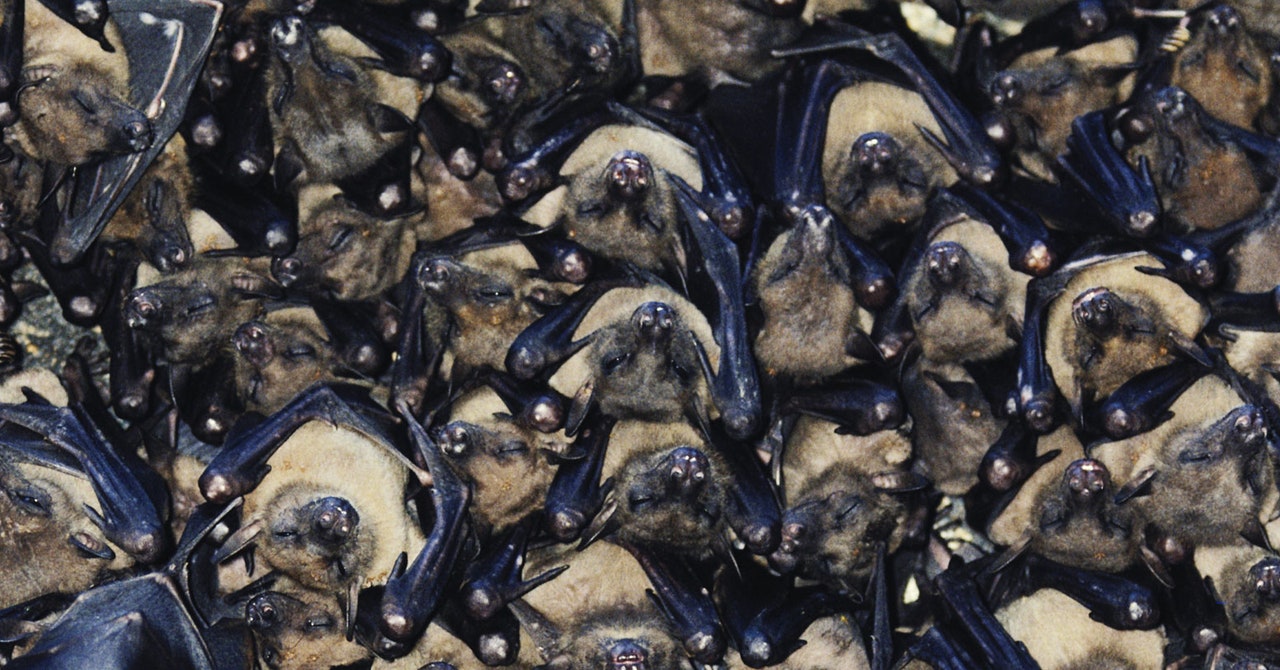
It’s now well-established that bats can develop a mental picture of their environment using echolocation. But we’re still figuring out what that means—how bats take the echoes of their own vocalizations and use them to figure out the locations of objects.
In a paper released Monday, researchers provide evidence that bats engage in echolocation in part because they’re born with an innate sense of the speed of sound. How did the researchers study this phenomenon? By raising bats in a helium-rich atmosphere, where the lower-density air increases the speed of sound.
Echolocation is rather simple in principle. A bat produces sound, which bounces off objects in its environment and then returns to the bat’s ears. For more distant objects, the sound takes longer to return, providing a sense of relative distance.
But bats can also use echolocation to identify prey in mid-flight or pick out a location to land on. For that, they need to have a sense of absolute distance. It’s not enough to know that the branch you want to land on is closer than the house behind it; you have to know when to begin the complex movements involved in latching onto the branch, or you might run into it or come to a complete stop in midair.
The simplest way of getting an absolute distance is to have a sense of the speed of sound. With that, the delay between a vocalization and the return echo will provide an absolute distance. But how do you test whether bats have some sense of the speed of sound?
Eran Amichai and Yossi Yovel of Tel Aviv University decided there was a simple method: changing the speed of sound. One of the factors that influences the speed of sound is the density of the air. And there’s a simple way to alter the density of air: spike it with lighter-than-air gases. In this case, the authors chose helium and raised a group of bats in an atmosphere that had enough helium in it to increase the speed of sound by 15 percent.
(Whether or not the bats raised in this environment sounded funny was sadly left untested.)
A faster speed of sound would mean that reflected echoes would return to the bat more quickly. That in turn would mean that the object that creates those echoes would be perceived as closer than it actually is. So if we could somehow figure out how close a bat perceived an object to be, we could get a measure of their understanding of the speed of sound.
Fortunately, the species of bat used in these experiments changes its echolocation sounds as it gets closer to an object. So by tracking the noises the bats make as they approach an object, we can get a sense of how close they think they are to it.
To do this experimentally, the researchers grew the bats in an enclosure with a feeding station a set distance away, with one group being raised in normal air and another being raised in helium-rich air. They then swapped the atmospheres for the two groups. For the bats that were raised with helium, the slower speed of normal air would make the echoes take longer to arrive and thus make the feeding station seem farther away. The reverse would be true for bats that had been raised in normal air.
As it turns out, both groups of bats behaved the same. They perceived the platform as being closer in the helium-rich air and farther away in the normal air. So it doesn’t matter what the bats learned from the environment they grew up in; their perception of the speed of sound was identical. This suggests the perception is innate to the bats.
That’s a bit surprising given that bats experience changes in weather and altitude that can also alter the speed of sound, often by more than 5 percent. So it might seem to be advantageous to be able to adjust the echolocation according to conditions. But Amichai and Yovel put mature bats into the helium environment for a few weeks and found no indication that they could adjust their perceptions of where the feeding station was. This was true even in an atmosphere that was 27 percent helium. Thus, the bats’ knowledge of the speed of sound appears to be locked in place.


